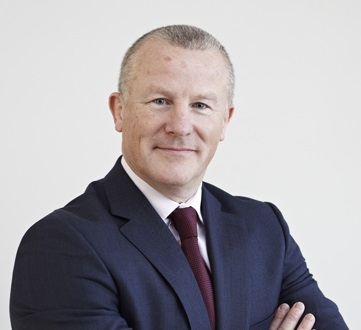Investors were ‘brimming with confidence’ at the end of 2023, with equity fund inflows buoyed by a higher risk appetite amid improving sentiment, while safe-haven money market fund buying dropped sharply.
Equity fund inflows surged to £1.19bn in December, their best month since April 2023 and the second-highest level in almost two-and-a-half years.
Investors ploughed cash into US equity funds, with net inflows more than doubling in December to a record £968m, according to the latest Fund Flow Index from global funds network Calastone.
European funds also recorded big inflows, with December representing the biggest turnaround for the sector. A net £476m was added, following capital withdrawals in every month since January 2022.
Calastone noted that global funds and emerging markets all recorded inflows, but UK-focused equity funds remained unloved, with investors pulling out £418m. However, it was well below the monthly average for 2023 of -£667m. But the data from December revealed that outflows from UK equities have been recorded for 31 consecutive months. If excluding the £8.01bn of outflows, all other equity funds actually attracted £6.77bn of new capital.
And ESG funds continued to lose their shine as they notched up eight consecutive months of outflows in December. However, the -£54m was the “least severe since investors turned negative on the ESG industry in May”, Calastone said.
In total, £2.39bn of outflows were recorded in 2023 – the first year of net selling – with ESG equity funds reversing just over one tenth of the inflows enjoyed during the boom which started in 2019.
The big investment winners
Money markets had their best year on record, with inflows (£4.38bn) exceeding the previous eight years combined. They absorbed a record £4.38bn, with investors plumping for safe havens amid high interest rates and low risk. However, when sentiment towards riskier assets rose sharply, inflows recoiled to £294m, which Calastone noted was well below the average inflows of the previous six months.
Meanwhile, fixed income funds saw inflows rise in December to net £283m, with £4.67bn of capital absorbed up to July. However, while this asset class looked to be on course for a record year, it “petered out over the summer and early autumn”.
“Investors only returned with relative caution to fixed income funds in November and December, and for the second half of the year overall, almost no new money flowed into the asset class. £4.78bn of inflows in 2023 were exactly in line with the long-run average in the end,” Calastone said.
Elsewhere, mixed asset fund outflows reduced to £466m in December, down from £1.59bn in November. Net outflows from the asset class totalled £4.82bn in 2023 – the first year on record this has happened.
Property funds also “fared badly” with a fifth consecutive year of outflows. In 2023, they shed £601m.
‘Equities back on the buy list’
Edward Glyn, head of global markets at Calastone, said: “The last couple of months have seen a dramatic turnaround both in the markets and in fund flows as evidence of disinflation is showing up all over the place – and that means rates might next move downwards. Equities are back on the buy list and that very same fixed income trade – lock into high yield and look for capital gains – is back in vogue too.
“Money market funds are doing well for two reasons. First, they are a safe haven as they invest in very short-dated fixed income securities – such bonds redeem within weeks, so credit risk is minimal, and yields are high just now. And secondly, the yield on money market funds is often well above what is available for cash on deposit at a bank, so they are drawing money away from the banking sector that might otherwise have idled in instant access savings.”
Glyn added: “The outlook for 2024 is unusually unclear. Many central banks are reluctant to signal rate cuts are coming, though the markets are ignoring them for now. The extent of the economic slowdown in the UK and Europe, and whether the red-hot US can engineer a soft landing are also crucial to the outlook for asset prices – and fund flows.”





